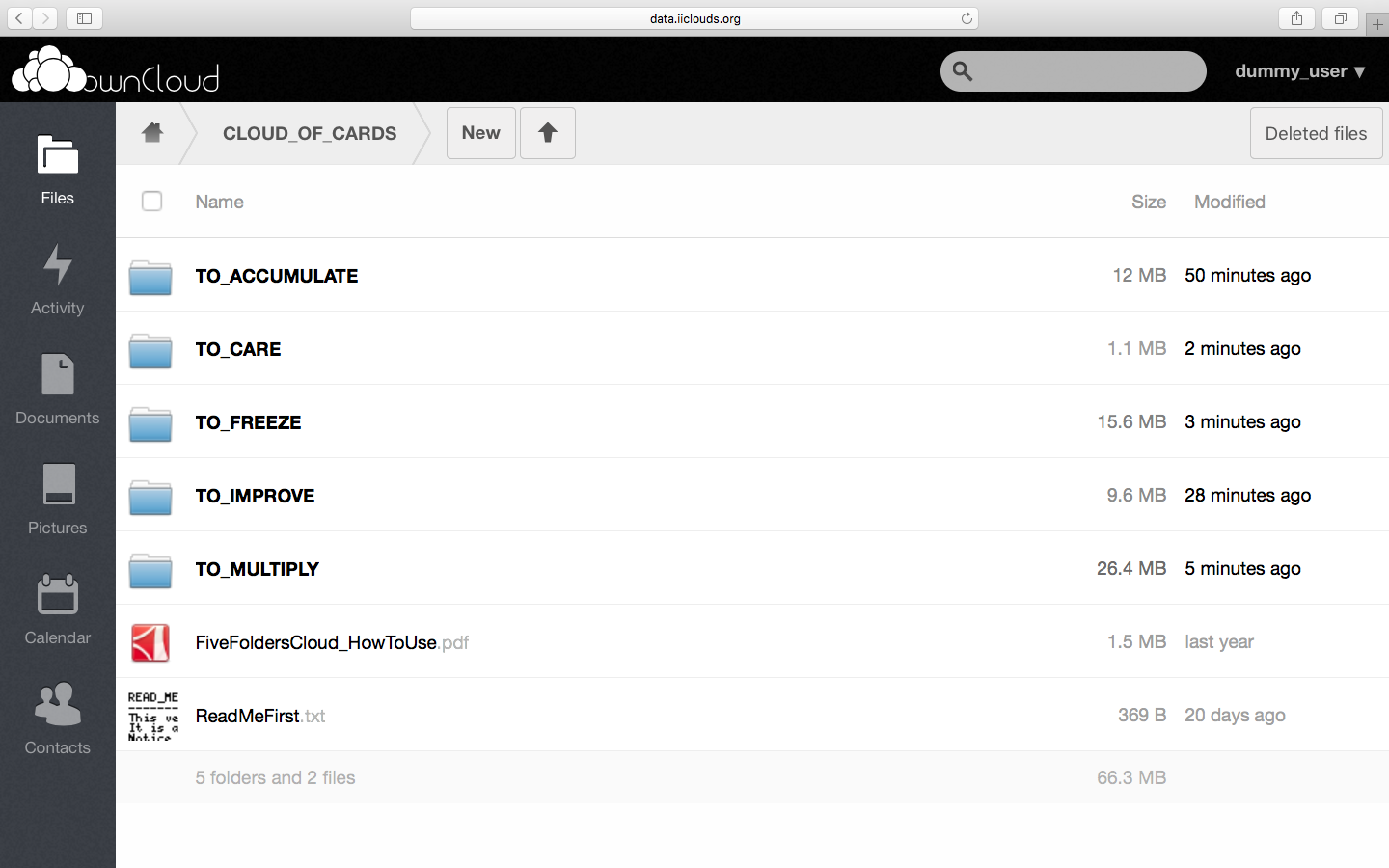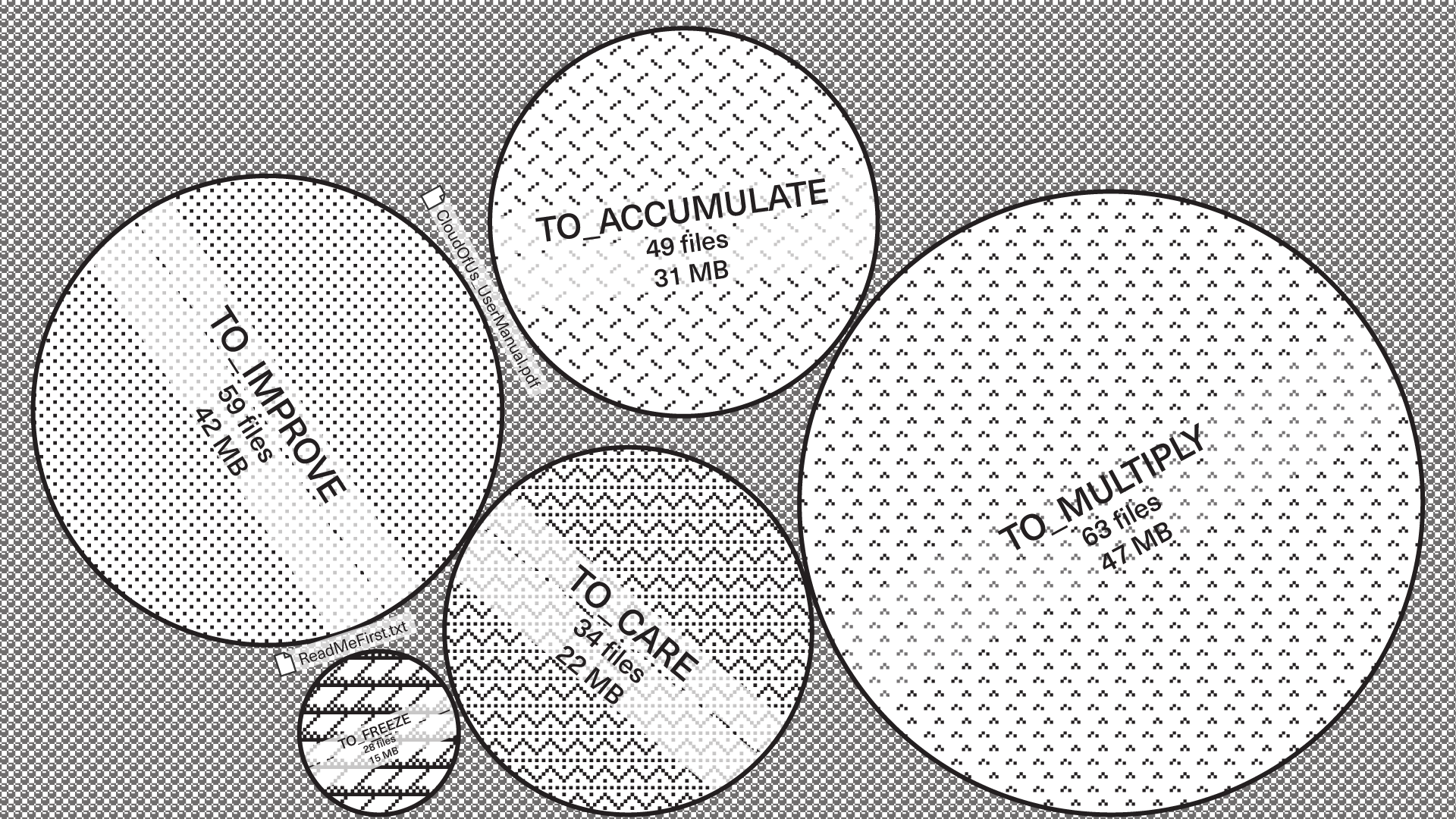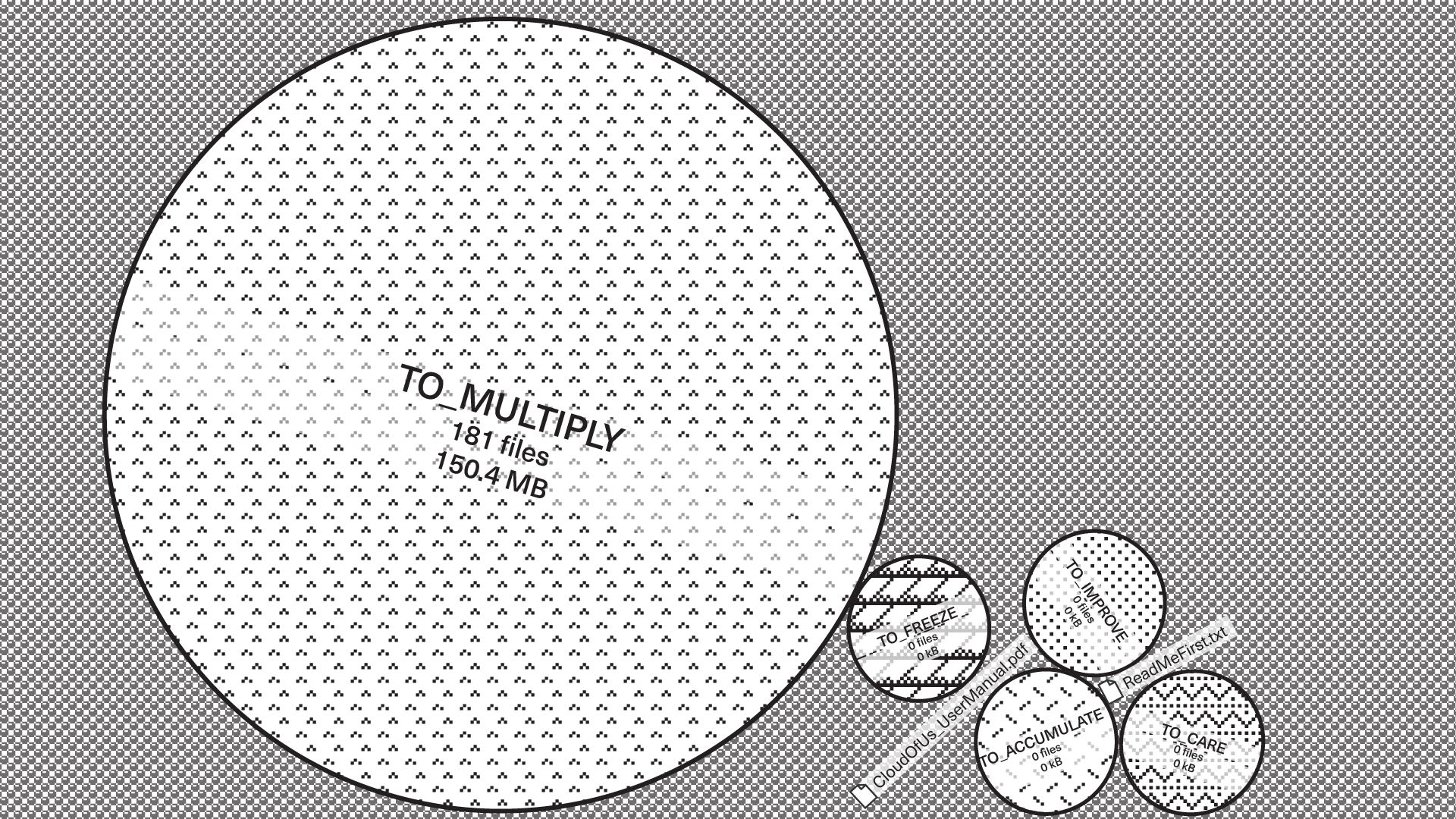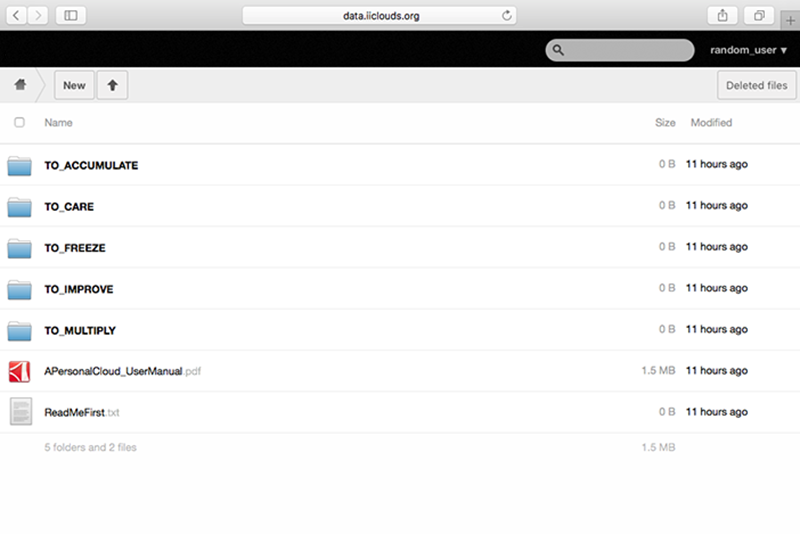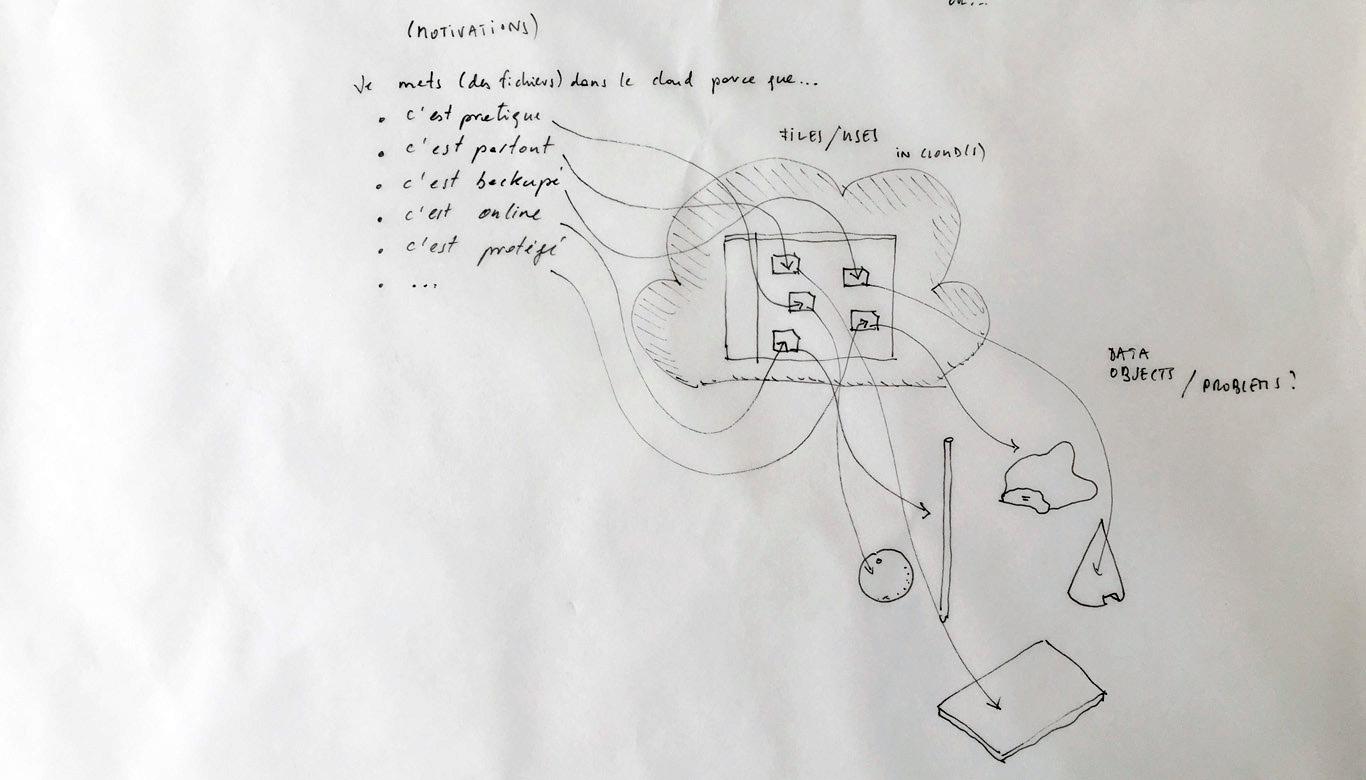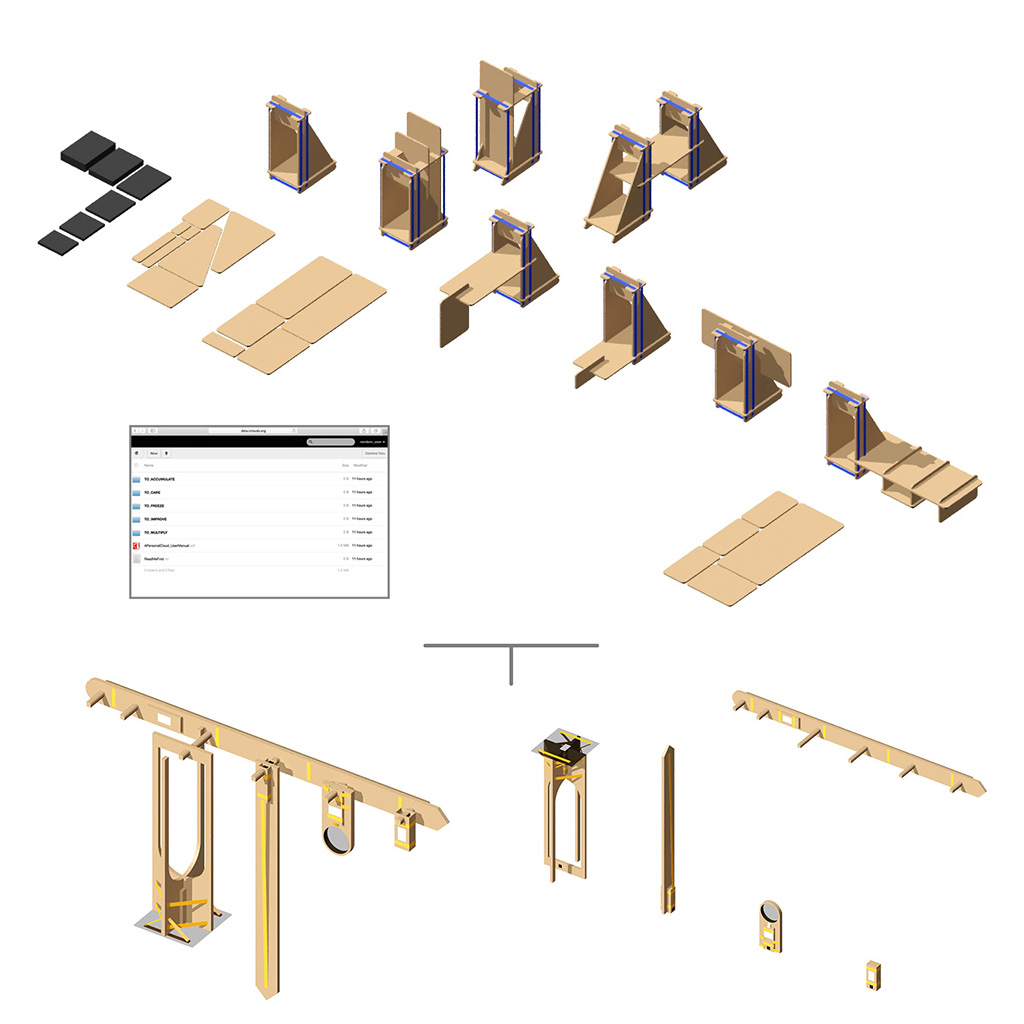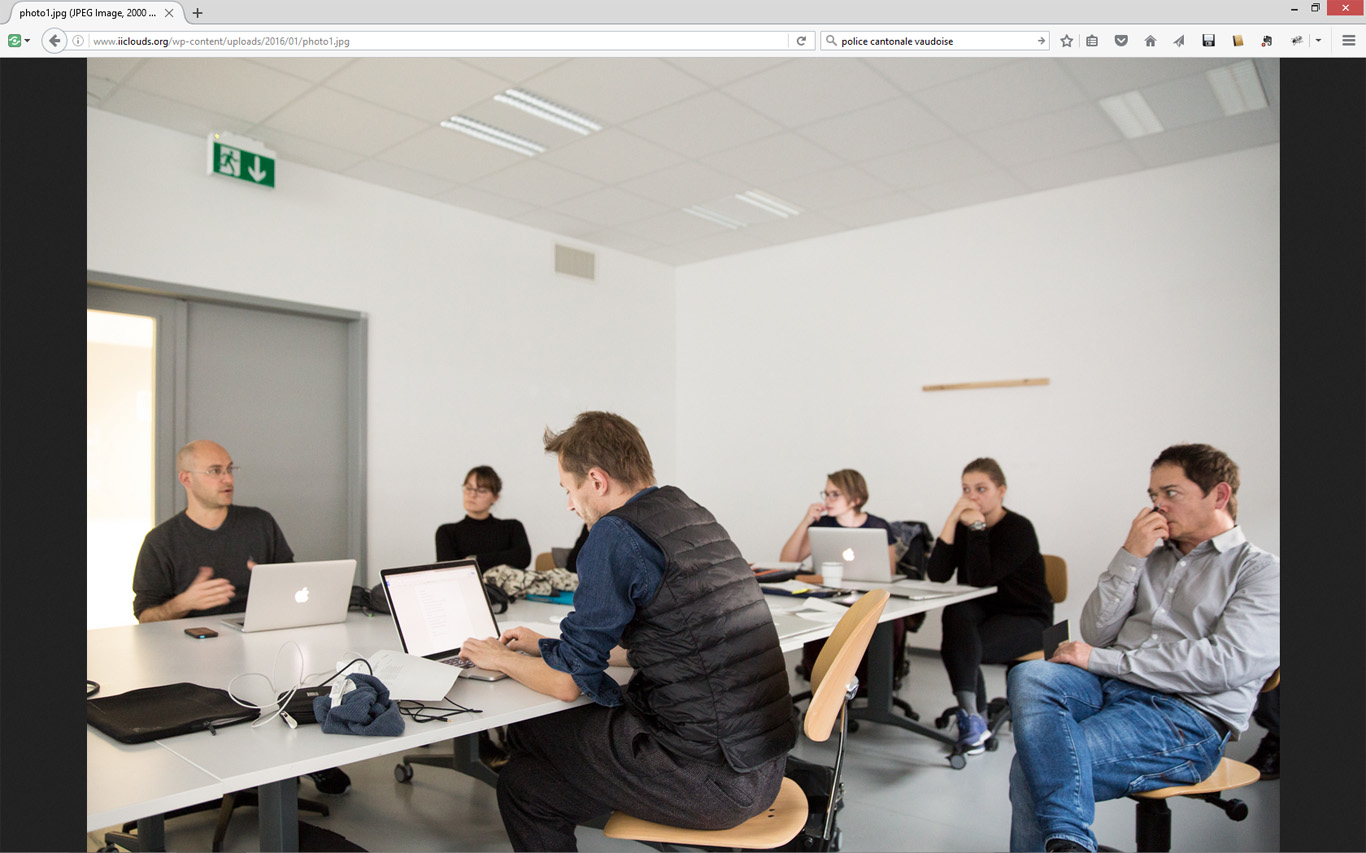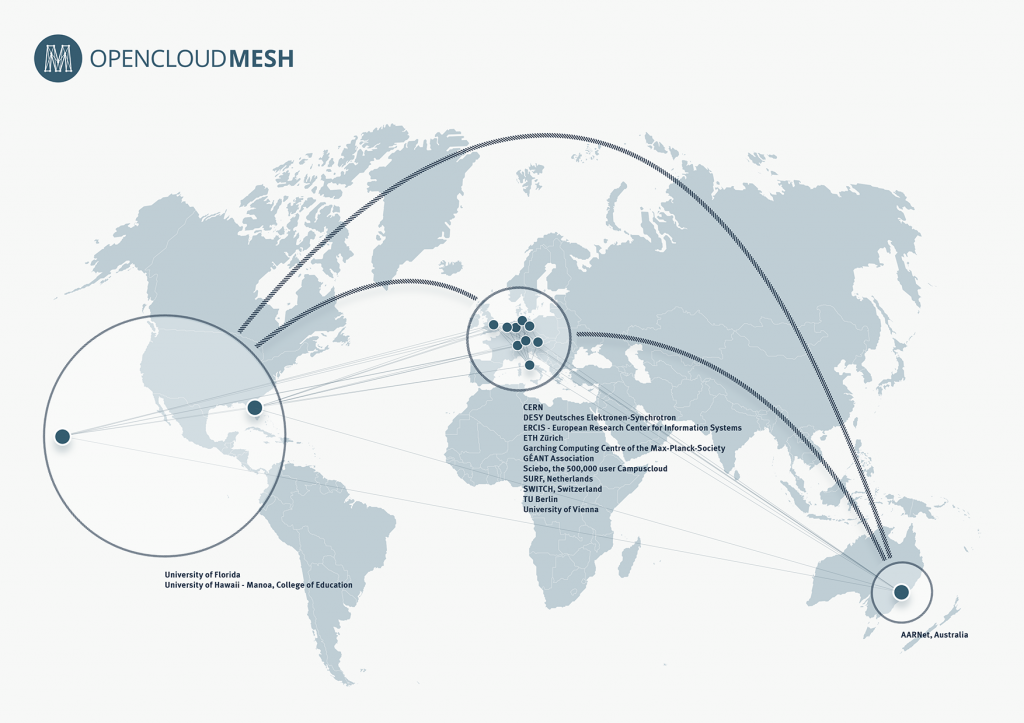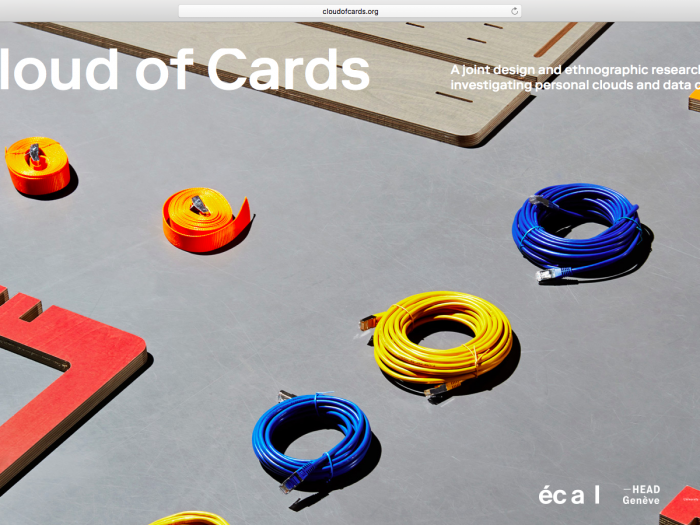Project developed by Christian Babski (fabric | ch)
5 Folders Cloud is a software implementation (among many possible) of the Cloud of Cards Processing Library and exemplifies its use, server and software side. It is a version of ownCloud with automated behaviors and cascades of events, in particular when linked to the 5 Connected Objects. As a matter of fact, this variation on the cloud combines a client-server architecture with a distributed, almost horizontal peer-to-peer approach.
Linked to the results of the research project’s ethnographic research on the uses of the cloud, 5 Folders Cloud translates in the form of five verbs of action the various identified motivations that seem to push users to drop files and data into this technological setup. These verbs in turn become the main functions and names of five synchronized cloud folders that serve the various files interactions. Each of these folders automates digital procedures linked to these motivations.
